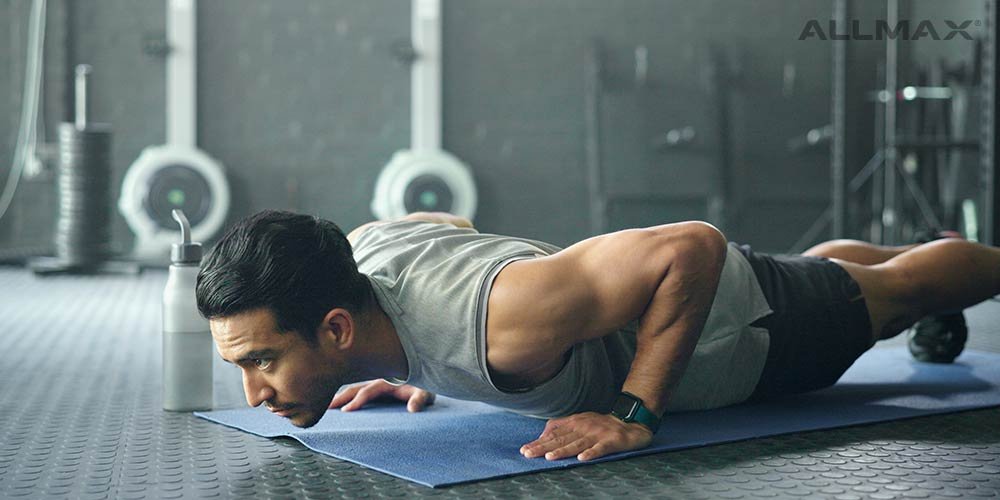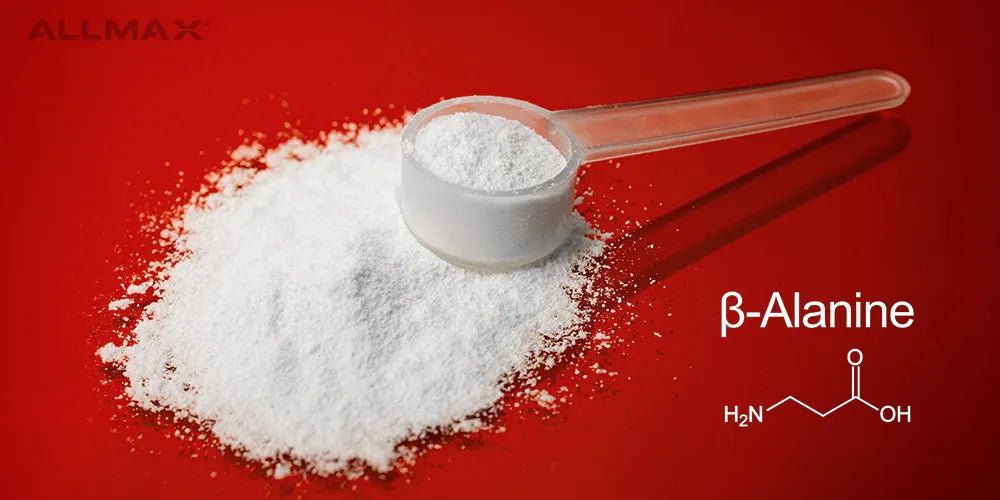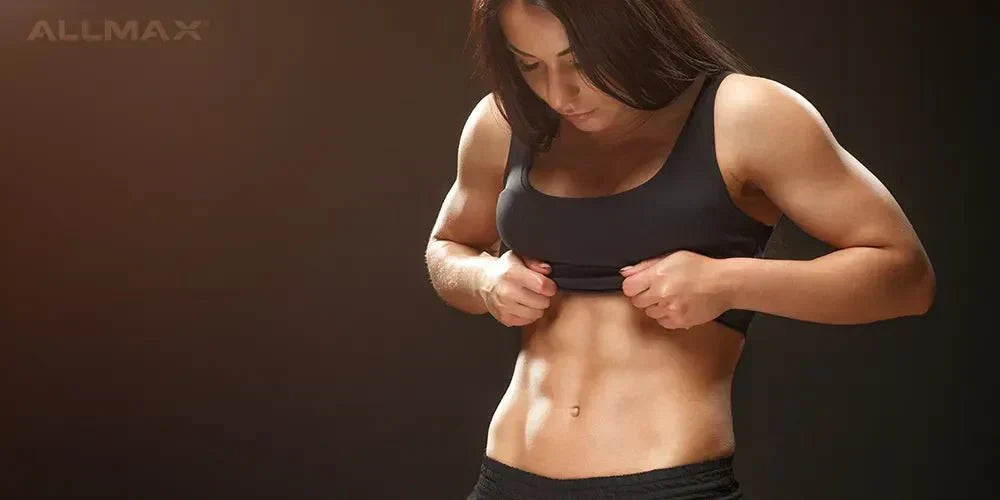Professional trainer and former NFL player Ryan Watson shares his expert approach to building serious chest muscle mass. Drawing from years of elite athletic experience, he guides you through a high-intensity chest workout packed with dynamic tension exercises, supersets, and smart training tips designed to maximize muscle engagement and deliver fast, noticeable results.
Part 1 – Building a Strong, Stable Chest with Dynamic Tension
This first part focuses on activating your chest muscles through controlled, dynamic tension exercises that not only target your pectorals but also engage your shoulders, triceps, and core for total upper-body stability. Using tools like the stability ball, bodyweight, added resistance bands, and weights, these supersets combine strength and balance training to maximize muscle growth and improve functional power.
Expect to challenge your chest from multiple angles while building endurance and enhancing your overall control and posture. Perfect for laying a solid foundation before moving on to heavier or more complex movements.
1. Exercise: Press on Stability Ball
Targeted Muscles:
- Pectoralis major (chest)
- Anterior deltoids (front shoulders)
- Triceps brachii (back of arms)
- Core stabilizers (abs and obliques)
How to Perform:
- Sit on a stability ball holding dumbbells.
- Roll down until your upper back is supported and hips are lifted.
- Press the dumbbells upward with a 180-degree rotation at the top of each rep.
- Slowly lower the weights back, maintaining core engagement throughout.
Tips:
- Keep your hips elevated to activate glutes and stabilize your body.
- Focus on a controlled rotation to maximize chest contraction.
- Use moderate weight to maintain proper form and avoid overextension.
Watch Out For:
- Avoid letting your hips sag—keep your core tight.
- Don’t lock out your elbows at the top.
- Maintain a firm grip and full control of the dumbbells throughout the movement.
Superset – Push Ups on Stability Ball
Targeted Muscles:
- Pectoralis major
- Deltoids
- Triceps
- Core and lower back stabilizers
How to Perform:
- Place both hands on the stability ball, shoulder-width apart.
- Lower your chest slowly toward the ball, keeping your elbows tucked in.
- Push back up and hold the top position isometrically for 2–3 seconds.
- Perform 10 reps per set.
Tips:
- Keep your body in a straight line—don’t let your hips drop.
- Squeeze your glutes and abs to stabilize your posture.
- Focus on slow, controlled reps for maximum engagement.
Watch Out For:
- Avoid wide hand placement—it reduces stability and increases risk of strain.
- Don’t rush the isometric holds—stay steady and breathe through them.
- If balance is a challenge, start with fewer reps and build up.
2. Exercise: Body Weight Push Ups
Targeted Muscles:
- Pectoralis major (chest)
- Anterior deltoids (front shoulders)
- Triceps brachii (back of arms)
- Core muscles (abs and lower back)
How to Perform:
- Start in a plank position with your hands slightly wider than shoulder-width and with weights places on your upper back.
- Lower your body until your chest nearly touches the floor.
- Push back up to the starting position, keeping your body straight throughout.
Tips:
- Keep your elbows at a 45-degree angle to protect your shoulders.
- Engage your core to maintain a straight body line and avoid sagging hips.
Watch Out For:
- Avoid letting your hips sag or pike upward.
- Don’t flare your elbows too wide, as this can strain your shoulders.
- Make sure the weights are stable and secure.
Superset – band push ups
Targeted Muscles:
- Pectoralis major
- Deltoids
- Triceps
- Core stabilizers
How to Perform:
- Loop a resistance band around your upper back and hold the ends under your hands.
- Perform push-ups as usual, pushing against the added resistance of the band.
- Form a narrow hand base (closer than shoulder-width) to increase difficulty.
- Complete 10 reps per set, repeat 3 times.
Tips:
- Keep your hands close to maximize resistance and chest activation.
- Control your movement, both lowering and pushing up.
- Maintain tight core engagement throughout.
Watch Out For:
- Avoid letting the band slip or lose tension.
- Don’t compromise form for more reps—quality over quantity.
- Warm up your shoulders before starting to prevent injury.
Part 2 – Intensify Your Chest Growth with Resistance and Isolation
This part of the workout ramps up the intensity by incorporating kettlebell presses and flies, cable crossover 21s, and forward lean dips — all designed to stimulate your chest muscles from different angles and with varied resistance.
These exercises emphasize muscle fatigue and hypertrophy, helping you build serious mass while also improving muscular endurance and control. By carefully controlling tempo and maintaining form, you’ll maximize the activation of your pecs and supporting muscles.
3. Exercise: Kettle Bell Presses
Targeted Muscles:
- Pectoralis major (chest)
- Anterior deltoids (front shoulders)
- Triceps brachii (back of arms)
- Stabilizing muscles of the shoulder girdle
How to Perform:
- Hold kettlebells at chest level with a neutral grip.
- Press the kettlebells overhead in a controlled motion, fully extending your arms.
- For kettlebell flies, lie on a bench or floor, hold kettlebells with arms extended above chest, then lower arms out wide in a controlled arc, stretching the chest before bringing them back up.
Tips:
- Varying the kettlebell exercises challenges your muscles differently due to the unique weight distribution.
- Keep movements slow and controlled to maximize muscle tension and avoid momentum.
- Focus on a full range of motion to stimulate chest fibers deeply.
Watch Out For:
- Avoid locking elbows at the top of presses to protect joints.
- Keep shoulders down and back to prevent strain during flies.
- Use a manageable weight to maintain control and form.
4. Exercise: Cable Crossover 21s
Targeted Muscles:
- Pectoralis major (especially inner chest)
- Anterior deltoids
- Biceps (stabilization during movement)
How to Perform:
- Stand about 2 feet in front of the cable pulley machine, feet shoulder-width apart.
- Use the handles attached to cables set at chest height.
- erform a sequence of 21 reps broken into three parts:
- 7 reps from low pulley to mid-chest level,
- 7 reps from midrange chest level to top,
- 7 reps from high pulley to low, crossing arms at the end.
- Keep the reps continuous without resting between parts.
Tips:
- Maintain tension on the cables throughout the movement for constant muscle activation.
- Keep a slight bend in your elbows to protect your joints.
- Focus on squeezing your chest muscles at the peak contraction of each crossover.
Watch Out For:
- Don’t lean excessively forward or backward—maintain a stable upright posture.
- Avoid jerky or fast movements to reduce injury risk.
- Ensure cables are properly secured before starting.
5. Exercise: Forward Lean Dips
Targeted Muscles:
- Pectoralis major (especially lower chest)
- Triceps brachii
- Anterior deltoids
How to Perform:
- Position yourself on parallel bars, gripping firmly.
- Lean your torso slightly forward to emphasize chest engagement.
- Lower your body slowly until your shoulders are below your elbows.
- Push back up to the starting position, focusing on chest contraction.
Tips:
- Warm up your shoulders and chest thoroughly before starting dips.
- To increase difficulty, add weight using a dip belt or weighted vest.
- Keep your elbows flared slightly outward to target the chest more.
Watch Out For:
- Avoid dropping too low to prevent shoulder strain.
- Control the movement—don’t use momentum to bounce back up.
- Stop immediately if you feel sharp pain in the shoulders.
Workout Duration and Final Tips
The complete dynamic tension chest workout, including all exercises and supersets, should take approximately 1 hour to complete. This allows enough time for proper warm-up, focused sets, controlled rest periods, and maximizing muscle engagement. Prioritize quality over speed—maintaining good form and muscle tension throughout will deliver the best results and help prevent injury.
Supplement Support for Maximum Chest Gains
To get the most out of your dynamic chest workouts, fueling your body with the right supplements before and after training can make a big difference.
Pre-Workout Supplements:
- Creatine: Enhances strength and power output, allowing you to push harder during your sets.
- Beta-Alanine: Helps reduce muscle fatigue, so you can perform more reps with better form.
- Caffeine: Boosts focus and energy, improving workout intensity and endurance.
Post-Workout Supplements:
- Whey Protein: Supports muscle recovery and growth by providing fast-digesting amino acids.
- BCAAs (Branched-Chain Amino Acids): Reduce muscle soreness and support repair.
- Glutamine: Helps replenish muscle glycogen and speeds up recovery.
- Electrolytes: Rehydrate and maintain muscle function after intense sweating.
Remember to stay hydrated and eat balanced meals alongside supplements for the best results. Always consult with a healthcare professional before starting any new supplement regimen.



